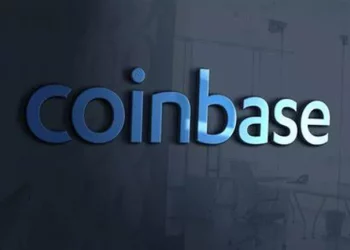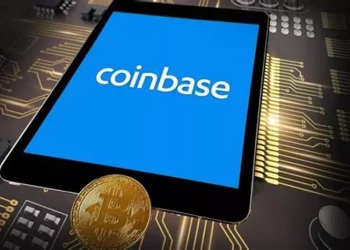KYC, which stands for “Know Your Customer,” is a crucial process in the financial world, especially for cryptocurrency exchanges like Binance. In the world of digital currencies, the KYC process helps to ensure that users are who they claim to be, promoting security, transparency, and regulatory compliance. This article will explore what KYC verification is on Binance, why it is important, how it works, the different levels of KYC verification on Binance, and how users can complete the process.
What is KYC Verification?
KYC stands for “Know Your Customer” and refers to the process by which a financial institution or service provider collects and verifies the identity of its users. KYC is an essential element of anti-money laundering (AML) efforts and is designed to prevent financial crimes such as money laundering, fraud, and terrorist financing.
The process involves verifying the personal identity of a user by collecting sensitive information such as their name, address, date of birth, and government-issued identification. Financial institutions, including cryptocurrency exchanges, use KYC verification to ensure that users are legitimate and comply with regulatory standards.
Binance, one of the largest and most popular cryptocurrency exchanges in the world, requires KYC verification to ensure that users can access certain features and withdraw larger amounts of funds securely.
Why is KYC Verification Important?
Regulatory Compliance: Cryptocurrency exchanges like Binance operate in a highly regulated environment. KYC verification is necessary to comply with the financial regulations of various countries. By ensuring that users are verified, exchanges can avoid potential legal and regulatory issues, which could result in fines or even the shutdown of their platform in certain jurisdictions.
Preventing Financial Crimes: The cryptocurrency industry is often associated with illegal activities due to its pseudonymous nature. KYC helps prevent crimes like money laundering, fraud, and terrorism financing by ensuring that the people behind the transactions are legitimate.
User Security: KYC verification is an essential step in securing user accounts and preventing unauthorized access. By verifying the identities of users, Binance ensures that only authorized individuals can carry out transactions, adding an extra layer of protection to the exchange.
Enhancing Trust: KYC compliance enhances trust within the cryptocurrency market. When users know that an exchange is verifying the identities of its customers, it increases confidence in the platform and fosters a safer trading environment.
Higher Transaction Limits: Binance has different levels of KYC verification, which directly influence the user’s transaction limits. Those who complete higher levels of verification are allowed to withdraw larger amounts of cryptocurrency or fiat. Therefore, completing KYC allows users to access more advanced features on the platform.
KYC Levels on Binance
Binance offers multiple levels of KYC verification, with each level providing users with different access privileges and transaction limits. These levels range from basic verification to advanced identity verification. Let’s look at the different levels:
1. Level 1 – Basic Verification
This is the entry-level KYC verification on Binance. To complete basic verification, users are required to submit the following information:
Full Name: The user’s legal name as per government records.
Country of Residence: The country in which the user resides.
Date of Birth: The user’s date of birth.
Identification Document: A government-issued ID such as a passport, driver’s license, or national ID card.
The process for Level 1 verification is relatively quick and can usually be completed within a few minutes. Once verified, users will gain access to basic features on Binance, including trading, depositing, and withdrawing small amounts of cryptocurrency and fiat.
2. Level 2 – Advanced Verification
Level 2 verification is more comprehensive and involves additional steps to verify the user’s identity. To complete this level of verification, users are required to submit the following information:
Selfie with ID: A photograph of the user holding their government-issued ID next to their face to ensure that the ID belongs to them.
Address Verification: Users may be required to submit a recent utility bill, bank statement, or any other official document that shows their full name and residential address.
Level 2 verification is necessary to unlock higher transaction limits on Binance. Users who complete this verification level will have access to additional features, such as larger withdrawal limits for both cryptocurrency and fiat.
3. Level 3 – Institutional Verification
This verification level is specifically for institutions, businesses, or corporate entities that wish to use Binance for trading or investment purposes. The process for institutional verification is more involved and requires more documentation, such as:
Company Documents: Articles of incorporation, business licenses, or any other official documentation proving the legal standing of the entity.
Authorized Representative: The person responsible for handling the account must also undergo a KYC process and provide identification documents.
Institutions that complete Level 3 verification are given access to enterprise-level features and can carry out significantly larger transactions on Binance.
The KYC Verification Process on Binance
Completing KYC verification on Binance is a straightforward process, but it requires careful attention to detail. Below is a step-by-step guide on how to complete the KYC verification process on Binance:
Step 1: Create an Account
Before you can begin the KYC process, you need to create a Binance account. To do this, go to the Binance website and click on the “Register” button. Provide your email address and create a strong password. You will also need to verify your email address by clicking on a link sent to your inbox.
Step 2: Navigate to the Verification Page
Once you’ve logged in to your Binance account, navigate to the user dashboard. On the top-right corner of the page, click on the profile icon, and then select “Identification” or “Verify” to begin the KYC process.
Step 3: Select Verification Level
Select the appropriate level of verification based on your needs. Most individual users will start with Level 1 verification, while institutions or users who want higher withdrawal limits will proceed with Level 2 or Level 3.
Step 4: Submit Personal Information
For basic verification, enter your full name, date of birth, country of residence, and any other requested details. Make sure all information is accurate to avoid delays.
Step 5: Upload Identification Documents
Depending on the verification level, you will be asked to upload a government-issued ID (passport, driver’s license, national ID card) and potentially a selfie with your ID. Ensure that the documents are clear and legible to avoid rejection.
Step 6: Address Verification
For Level 2 verification, you will need to upload a document that proves your residential address. This could be a utility bill, a bank statement, or any government-issued document showing your name and address. Ensure that the document is recent and clearly shows your full name and address.
Step 7: Wait for Approval
After submitting your documents, Binance will review the information and verify your identity. This process can take anywhere from a few minutes to a few hours, depending on the level of verification and the volume of applications Binance is handling.
Step 8: Confirmation and Access
Once your KYC verification is complete, Binance will send you a notification confirming your verification status. You can then begin using your account with access to the features corresponding to your verification level.
Common Issues and Challenges with KYC Verification
While Binance’s KYC verification process is generally smooth, there are some common issues that users might encounter:
Rejected Documents: If your identification documents are blurry, expired, or incomplete, Binance may reject them. Make sure to upload high-quality images of valid, unexpired documents.
Inaccurate Information: Ensure that all the information you provide matches the details on your identification documents. Even small discrepancies can cause delays or rejections.
High Volume of Applications: During periods of high demand, Binance may take longer to process KYC applications. If you experience delays, try to be patient and check your application status regularly.
Address Verification Issues: Ensure that your address verification document is recent and clearly shows your name and address. Some users face issues with documents that are outdated or do not meet Binance’s criteria.
Benefits of KYC Verification on Binance
Higher Withdrawal Limits: Completing KYC verification allows you to withdraw larger amounts of cryptocurrency and fiat. Level 2 verification unlocks significantly higher withdrawal limits compared to Level 1.
Access to More Features: Verified users gain access to additional Binance features such as margin trading, futures trading, and P2P transactions.
Security and Protection: KYC verification adds an extra layer of security to your account, ensuring that only authorized individuals can access your funds. This helps prevent unauthorized access and protects against fraud.
Regulatory Compliance: By completing KYC, Binance ensures that it adheres to global regulatory standards. This compliance helps Binance remain operational in multiple jurisdictions, providing a more trustworthy and reliable platform for users.
Conclusion
KYC verification on Binance is a necessary step to ensure the security, transparency, and regulatory compliance of the exchange. By verifying your identity, you contribute to a safer and more secure environment for cryptocurrency trading. Binance offers multiple levels of verification, each providing users with different privileges and transaction limits.
While the KYC process may seem tedious at first, it offers a range of benefits, from enhanced security to access to higher withdrawal limits and additional features. It is essential for users to understand the verification process and ensure that they provide accurate information to avoid delays or complications.
In the ever-evolving world of cryptocurrency, KYC verification helps maintain the integrity of exchanges like Binance, enabling them to provide a safe, trustworthy platform for traders and investors alike.
Related topics:

















